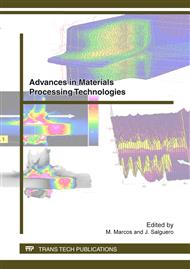p.145
p.151
p.157
p.163
p.169
p.177
p.183
p.189
p.195
Metrology - Base for Scientific Cognition and Technical Production
Abstract:
For understanding todays metrology a brief historical review is given, starting with the definition of units for trade and construction of buildings. Later on, industrial metrology is needed for the development of modern production processes and interchangeable manufacturing. In order to support the international exchange of goods and the development of precise manufacturing processes traceability of measurement results had to be established. Global trade as well as international companies profited from the standards to achieve lower costs for products from all over the world and simultaneously new measurement techniques were developed. The firstly defined two point-size-tolerances and measurements with simple measurement devices like calipers became soon insufficient. Together with the improvement of manufacturing processes and increasing demands for an economical way of production, advanced measurement techniques were found. In this overview, the development from tactile to optical measurement techniques with some important examples is shown in parallel with the development of standards. The requirements for todays manufacturing metrology methods as well as the role of measurement of geometrical quantities in industry and trade are derived and future trends are pointed out.
Info:
Periodical:
Pages:
169-176
Citation:
Online since:
April 2012
Authors:
Keywords:
Price:
Сopyright:
© 2012 Trans Tech Publications Ltd. All Rights Reserved
Share:
Citation:


